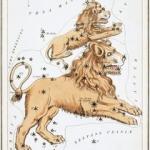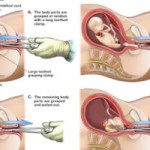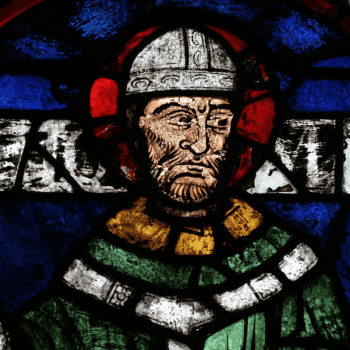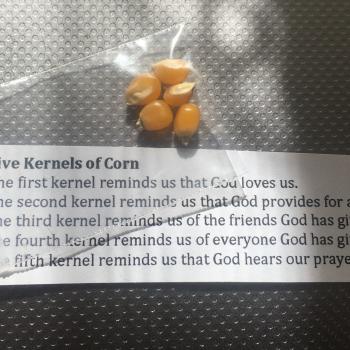The eleventh of the twelve signs of the Christian Zodiac is Cancer (June 21 – July 22).
It signifies transformation, from darkness to light, from putting off the old self and putting on the new (Eph. 4:22-24). Its modern-day symbol is a crab, but the ancient Egyptian symbol was a Scarabceus, a sacred beetle.
By way of illustration, the crab periodically sheds its shell and puts on a new one, which changes the form and shape of its body. So too, like believers and the church, through the sanctification of the Holy Spirit, they grow and change.
The beetle also undergoes a transformation, but much more so. In its first phase of life, it lives underground in complete darkness. It is “often terrified by unintelligible voices from the sunlit world above, compelled to eat and live amid filth, and with no worthier employment than to grow and wait for future changes,” Joseph Agustus Seiss explains in his lecture “The Starry Worlds,” first published in 1882.
“And so it is with the earthly church… we are slaves of toil and suffering, full of darkness, doubt, and uncertainly loaded with groveling cares, … though bearing in us the germs and beginnings of eventual glory and blessedness,” he adds.
The next phase of the beetle’s growth is the chrysalis, when it no longer eats, its senses are closed, it stops all activity and goes into a mummy condition– the middle stage in which the inner being lives but the outer being is eventually destroyed. The new beetle emerges out of the chrysalis in the last stage leaving behind the shell of its old life. It has wings and flies into the sunlit sky.
The ancient Egyptians mummified human bodies believing they too would rest in a middle state, their inner bodies would become celestial ones. The image of beetle was carved into the stones of rings, shoe-latchets, priests’ seals, and ornaments and amulets worn by nobles. Memorials for marriage, and the last mark put on their dead were shapes of beetles. Thus, this star of the Zodiac symboled darkness to light, death to resurrection, and a journey from earth to heaven, for the Egptians.
The center of the constellation is a cluster of stars referred to as “the beehive.” In Arabic and Hebrew it means Multitude, Offspring, the Young and Innumerable seed. “The same idea is expressed by Moses in connection with Issachar, to whom the Jews referred this sign, where he speaks of Issachar as being gathered into tents, called to the mountain, offering the sacrifices of righteousness..” (Deut. 33:18,19), Seiss argues. The cluster of stars, the people of Issachar, point to the home gathering of the multitudinous seed of faith in 1 Pet. 1:4-6, Seiss notes– where the faithful find eternal rest in heaven.
While the Greeks assigned the crab to the mythology of Jupiter, the Egyptians used words with Noetic roots to describe it. Cancer was called Khan, meaning resting place, and ker, meaning embraced, encircled.
Cancer quite literally means rest secured.
Its chief star is Acubens, which means the sheltering, the place of retirement, the good rest. It is the sign of the saints’ everlasting rest, Seiss points out.
Cancer’s first Decan is Ursa Minor, referred to as the lesser bear– even though the sign is not a bear. The Greeks used the sign in their mythological stories about Jupiter. Yet no traces of bears are connected to this sign in the Egyptian, Persian or Indian zodiacs.
Ursa Minor is more widely known as the Little Dipper. The star on the right, Polaris, sits opposite the two stars of Kochab.
Ursa Major, or the Big Dipper, is known by Arab astronomers as Al Naish, or Annaish, meaning, the ordered or assembled together, like a sheep fold.
Its two central stars in the cup of the dipper are Dubheh, or dubah (Dubhe), meaning a collection of domestic animals, a fold ,and Merach (Merak), the flock. The stars in the handle are Alkeid, Mizar, Aloioth, Megrez and Phad.
Seiss says we must consider looking at these constellations as two sheepfolds of flocks, not bears. Although ancient Jewish commentators suggest that the Book of Job refers to “Arcturus and his sons,” to Ash or Aish, meaning he’s referred to the seven stars of the Great Bear. (Ursa Minor has seven principle stars known as the Septentriones.)
Yet the Dendera Zodiac also points to a sheepfold, Seiss notes, “the picture of the seed of faith spoken of in the text in its twofoldness, the church of the firstborn around the the throne.”
Perhaps the most controversial Decan, is the third one, Argo.
Argo was made famous by the story of the Argonauts’ expedition to recover the Golden Fleece in Greek Mythology. Seiss makes clear what is wrong about this secular interpretation. He writes:
“Since the time of Home, and long before Homer lived, the world has been full of noise about this ship and these gods and demigods of the Argonautic Expedition. But that same world till now has been floundering about to find a key to unlock the mystery in which the story in enveloped. Many are the suggestions to explain it, but all as empty of satisfactoriness as they are beneath the importance and significance always and everywhere attached to it.
“The trouble is that men have ever persisted in trying to interpret it with reference to the affairs of ordinary human history or of some wild conceits of dreaming poets; whereas it belongs to the mystic, spiritual, and prophetic ideas frescoed on the stars, and to nothing else under heaven.
He goes on to compare the difference between the Argo Expedition and that of the life of Christ and his followers.
“It is a blessed consolation to the oft-weary toilers and travelers in this world to know that there does remain a rest for the people of God,” Seiss attests, pointing to John 14:1-3, Isaiah 25:10, Revelation 7:9-17, 3:21– promises God fulfilled to the faithful with him and heaven, and to those yet to join him.
“Let us then be encouraged,” Seiss argues pointing to the patriarchs, “to believe as they believed, to hope as they hoped, laboring and looking for entrance into the same holy rest.”
Christians can look to the Big and Little Dipper of Uras Minor and Ursa Major as the image of a sheep pen, and a shepherd with his flock. To have confidence in knowing that putting off the old, taking on the new, ends with rest in the One who saves and protects.












